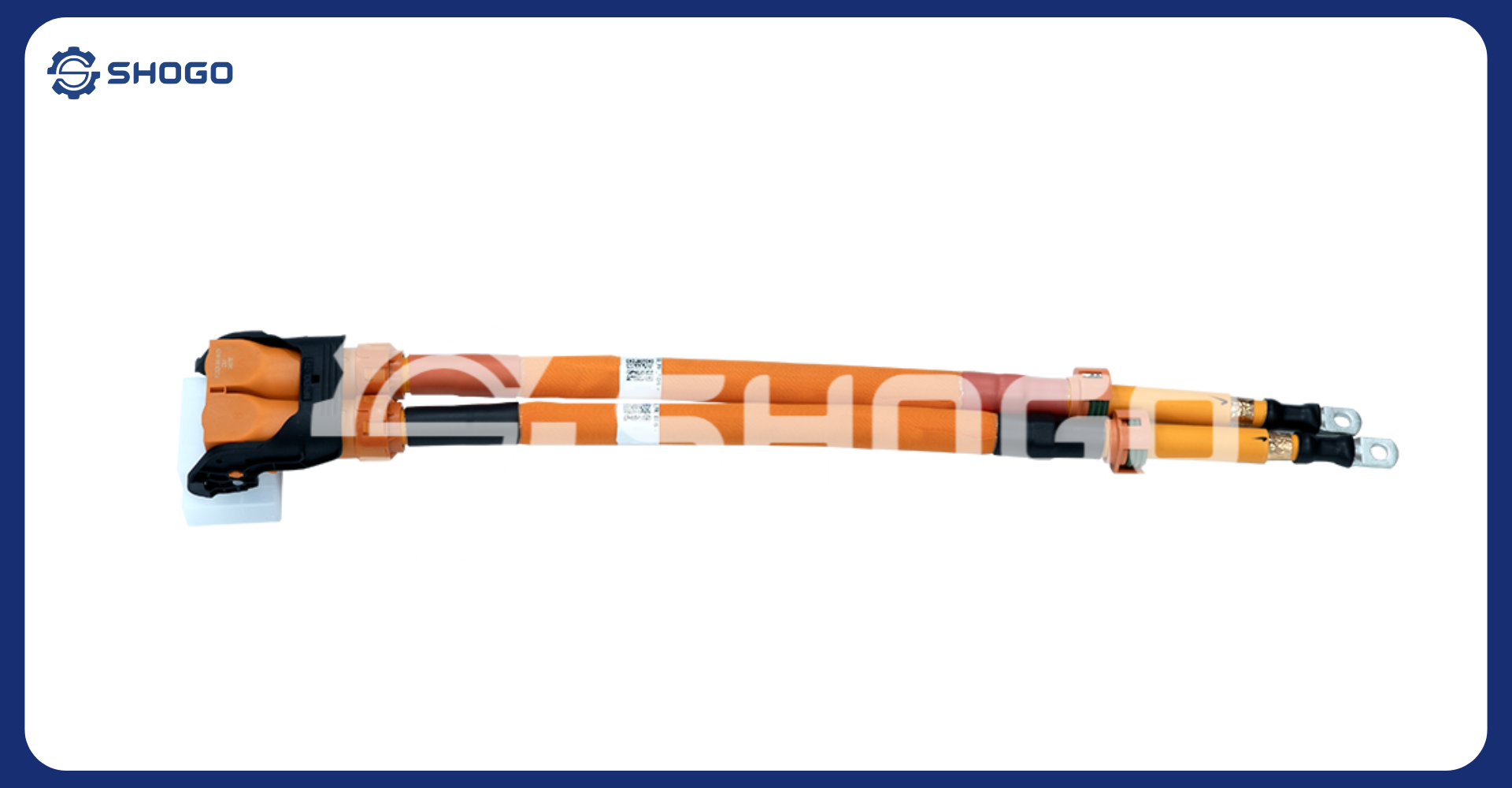
1. What Does the Orange Color on EVHV Cables Mean?
In electric vehicles, you’ll notice that all high-voltage cables are coated in bright orange insulation—whether they connect the battery, inverter, motor, or onboard charger.
This color choice isn’t aesthetic. It’s a universal safety convention, used to:
- Warn technicians and users: This cable carries high voltage and can be dangerous if mishandled
- Distinguish high-voltage wires from low-voltage or signal cables in complex wiring systems
- Comply with global automotive safety and technical standards
2. Which Standards Require EVHV Cables to Be Orange?
Leading technical bodies and automakers require orange for all high-voltage cables:
- ISO 6469-3: Global standard for electrical safety in electric road vehicles
- SAE J1128 & SAE J1654: Color-coding for automotive and EV wiring
- LV 216 / LV 214: (Daimler, VW, BMW) High-voltage cable identification standards
- UL & IEC Standards: International regulations for fire and electrical safety
→ These standards specify that any cable carrying more than 60V DC or 30V AC in an EV must have orange outer insulation.
3. Practical Reasons Behind the Orange Color
🟠 High visibility and instant recognition
- Orange is a psychologically recognized “warning” color—easy to spot inside crowded engine bays or complex harnesses
- Technicians can instantly identify high-voltage lines and disconnect power before working
🟠 Safety during servicing and emergencies
- In crash recovery or emergency repair, first responders can quickly locate high-voltage cables (orange) and avoid electrocution
🟠 Global standardization
- EVs may be produced in Germany, Japan, or the U.S., and sold worldwide. The orange color creates a universal visual safety language across countries and brands.
4. Are Other Colors Ever Used?
In special cases or for internal differentiation, EVHV cables may:
- Include colored stripes or markings to identify phases or functions
- Use black, red, or white insulation for inner layers or cores
However, the outer sheath must always be orange for any cable handling high-voltage power.
5. Conclusion
The orange color on EVHV cables isn’t optional—it’s a global safety requirement. It acts as a universal warning label that:
- Helps prevent accidental contact with high-voltage wiring
- Enhances technician safety during service and repair
- Ensures compliance with international automotive standards
If you’re designing or sourcing EV wiring systems, make sure all EVHV cables feature the standard orange insulation.
Need Certified Orange EVHV Cables?
We supply ISO, SAE, and UL-certified EVHV cables with standard orange jackets, available with custom terminals, sensors, and printed ID codes. Contact us now for samples and expert consultation.


